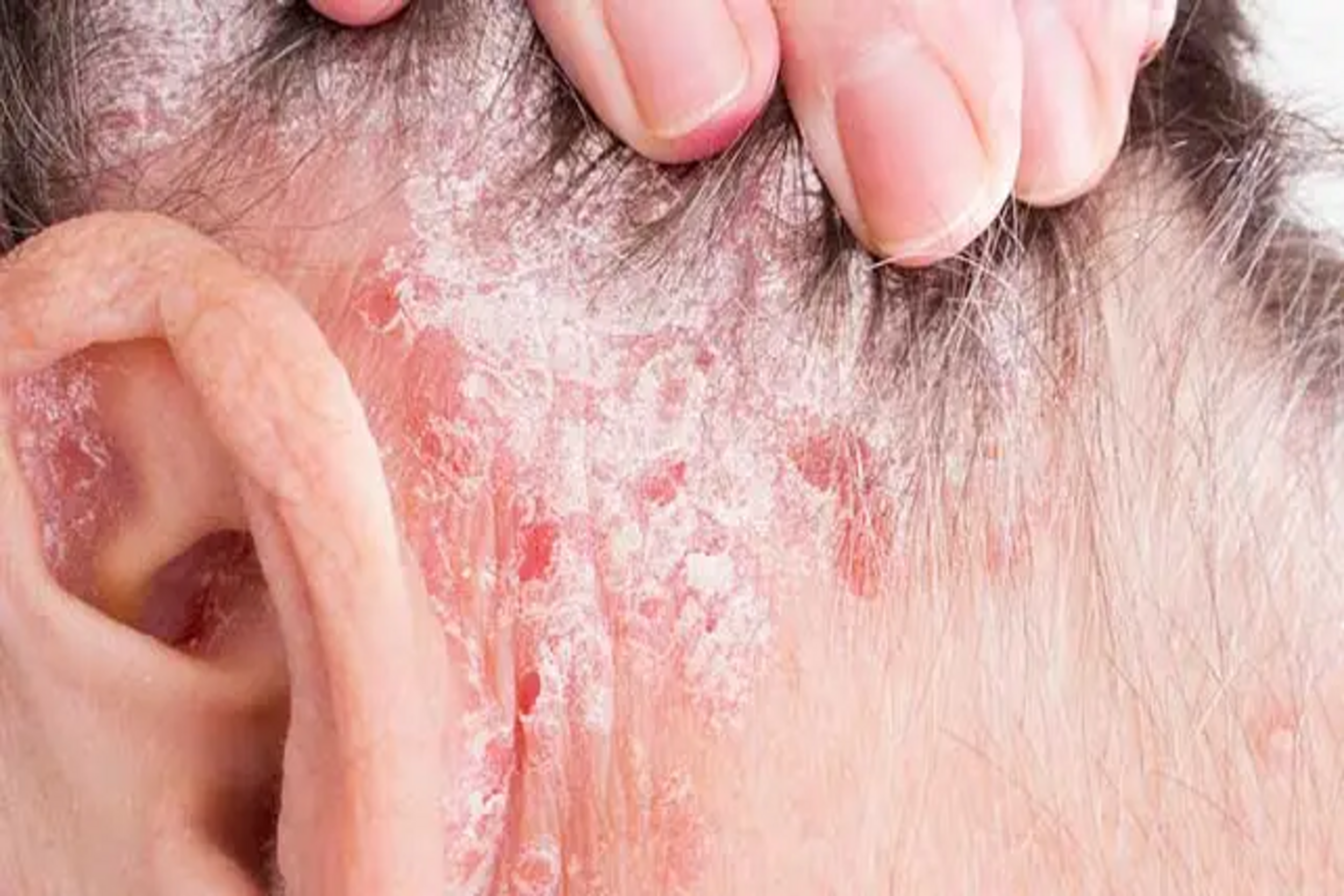Ingredients to Avoid in Hair Products If You Have Oily Hair
- Last Updated on

Image: istockphoto.com
Managing oily hair might seem like a never-ending struggle. Despite frequent washing, your scalp may still appear greasy, and your hair lacks the bounce and vitality you desire. Often, the culprit isn’t your cleaning routine but the ingredients in your hair care products. Many shampoos, conditioners, and styling products contain components that exacerbate oiliness, leaving your scalp feeling weighed down and triggering an overproduction of sebum. Identifying and avoiding these ingredients can significantly improve the health and appearance of your hair.
Articles Contains
- Ingredients to Avoid in Hair Products If You Have Oily Hair.
- Conclusion
- Key Takeaways
- Frequently Asked Questions
- References
This guide provides a comprehensive breakdown of the ingredients to watch out for in hair care products, why they’re problematic, and how to replace them with more effective options.
Ingredients to avoid in hair care products, why they’re problematic
1. Sodium Lauryl Sulfate (SLS) & Sodium Laureth Sulfate (SLES)
What They Are
SLS and SLES are powerful surfactants used in many shampoos and cleansers. They create a foamy lather, which gives the impression of deep cleaning. (1,3)
Why Avoid Them
Although effective at removing dirt and oil, sulfates can strip the scalp of its natural oils. This sends a signal to the sebaceous glands to produce more sebum, creating a vicious cycle of oiliness. Over time, this can irritate the scalp and lead to dryness and even dandruff.
Better Alternatives
Look for sulfate-free shampoos. These products use gentler surfactants such as:
- Cocamidopropyl Betaine: Derived from coconut oil, it cleanses without over-drying.
- Decyl Glucoside: A plant-based option suitable for sensitive scalps.

Image: 100percentpure.com
How to Use
Use sulfate-free shampoos 2-3 times weekly. If transitioning from sulfate shampoos, allow 2-4 weeks for your scalp to adjust.
2. Silicones (e.g., Dimethicone, Cyclomethicone)
What They Are
Silicones are synthetic compounds added to hair care products to provide a smooth and shiny finish. (2)
Why Avoid Them
While initially beneficial, silicones can accumulate on the scalp and hair, leading to buildup. This buildup can clog pores, exacerbate oiliness, and make hair feel heavy. Silicones are also water-insoluble, meaning they often require harsh cleansers for removal. (2)
Better Alternatives
Replace silicone-based products with ones containing natural oils or proteins. Ingredients like:
- Argan Oil: Provides smoothness without buildup.
- Hydrolyzed Proteins: Strengthen and add shine to hair naturally.

Image: lovebeautyandplanet.in
How to Use
Incorporate silicone-free shampoos and conditioners into your routine. Deep-clean your hair with a clarifying shampoo every 4-6 weeks to remove any residual buildup.
3. Cocamide DEA (Diethanolamine)
What It Is
Cocamide DEA is a thickening and foaming agent derived from coconut oil. (3)
Why Avoid It
Although marketed as natural due to its origin, Cocamide DEA can irritate the scalp and disrupt its natural oil balance. This disruption often results in an overproduction of sebum. Additionally, it has been flagged for potential toxicity concerns. (1,3)
Better Alternatives
Look for products with naturally derived foaming agents like:
- Sodium Cocoyl Isethionate
- Lauryl Glucoside

Image: health.clevelandclinic.org
How to Use
Stick to products labeled as “DEA-free” or “plant-based.” Use these products consistently to allow your scalp to stabilize.
4. Heavy Oils (e.g., Mineral Oil, Petroleum)
What They Are
Mineral oil and petroleum are occlusive agents often used in deep conditioners and styling products. (2)
Why Avoid Them
These ingredients form a thick layer over the scalp and hair, trapping sebum and preventing natural moisture regulation. This can worsen greasiness while weighing down your hair.
Better Alternatives
Choose lightweight oils that penetrate the hair shaft instead of sitting on the surface. For example:
- Jojoba Oil: Mimics the scalp’s natural sebum.
- Grapeseed Oil: Lightweight and suitable for oily scalps.

Image: www.seriouseats.com
How to Use
Apply lightweight oils sparingly, focusing on the ends of your hair rather than the roots.
5. Alcohols (e.g., Isopropyl Alcohol, Ethanol)
What They Are
These are drying agents used in many hair sprays, gels, and styling products. (2)
Why Avoid Them
Short-chain alcohols like isopropyl alcohol can dry out the scalp, prompting it to produce excess oil to compensate. (2)
Better Alternatives
Look for products with fatty alcohols, which are hydrating rather than drying. Examples include:
- Cetyl Alcohol
- Stearyl Alcohol

Image: healthline.com
How to Use
Limit the use of styling products containing short-chain alcohols. Instead, opt for alcohol-free alternatives.
6. Artificial Fragrances and Dyes
What They Are
These are synthetic compounds added to hair care products for scent and color. (4)
Why Avoid Them
Fragrances and dyes can irritate the scalp, causing inflammation and triggering excess sebum production. Some individuals may also develop allergic reactions to these components. (4)
Better Alternatives
Choose products labeled as “fragrance-free” or those using natural scents like essential oils. For color, look for plant-based dyes like henna or chamomile extract.

Image: medicalnewstoday.com
How to Use
Introduce fragrance-free products gradually, especially if your scalp is already irritated.
7. Parabens
What They Are
Parabens are preservatives used to extend the shelf life of hair care products.(1)
Why Avoid Them
While generally safe in small amounts, parabens can disrupt the scalp’s microbiome, leading to imbalances that may worsen oil production. (1)
Better Alternatives
Opt for paraben-free products. Many brands now use natural preservatives such as:
- Potassium Sorbate
- Phenoxyethanol

Image: www.helphair.com.au
How to Use
Check ingredient labels carefully, especially for long-lasting products like leave-in conditioners.
8. Lanolin
What It Is
Lanolin is a natural wax derived from sheep’s wool, commonly used in conditioners and styling products for its moisturizing properties.(4)
Why Avoid It
Lanolin is highly emollient and can be too heavy for oily hair types. It may contribute to scalp buildup, making your hair appear greasy and limp.
Better Alternatives
Lightweight moisturizers like:
- Aloe Vera: Hydrates without adding weight.
- Hyaluronic Acid: Retains moisture without clogging pores.

Image: romneymarshwools.co.uk
How to Use
Focus on leave-in treatments with lightweight hydrating ingredients and avoid applying products with lanolin directly to the scalp.
9. Waxes (e.g., Beeswax, Carnauba Wax)
What They Are
Waxes are used in styling products like pomades and texturizers to create hold and definition.
Why Avoid Them
Waxes can coat the hair shaft and scalp, leading to buildup that is difficult to wash out. This buildup can trap oil and debris, intensifying the appearance of grease.
Better Alternatives
Choose styling products that use water-soluble ingredients or lightweight polymers like:
- PVP (Polyvinylpyrrolidone)
Acrylates Copolymer

Image: asianbeautyessentials.com
How to Use
Limit wax-based styling products, especially near the scalp. Cleanse hair thoroughly if you use them occasionally.
10. Polyquaterniums
What They Are
Polyquaterniums are synthetic polymers used in conditioners and styling products to reduce frizz and add smoothness. (3)
Why Avoid Them
While effective for taming frizz, polyquaterniums can accumulate on the scalp and hair, creating a layer that traps oil and dirt. This can make your hair look greasy faster.
Better Alternatives
Seek out natural frizz-reducing ingredients like:
- Arginine: Smooths hair naturally.
- Silk Proteins: Adds softness without buildup.

Image: absolutelyeverythingcurly.com
How to Use
Use lightweight, buildup-free conditioners and minimize leave-in products with synthetic polymers
11. Panthenol (in High Concentrations)
What It Is
Panthenol, also known as pro-vitamin B5, is a common humectant used to improve hair elasticity and hydration. (1)
Why Avoid It
While beneficial in small amounts, high concentrations of panthenol can weigh down oily hair and give it a greasy appearance.
Better Alternatives
Use products with balanced formulations that combine panthenol with other lightweight ingredients like:
- Green Tea Extract: Strengthens hair without heaviness.
- Witch Hazel: Provides gentle hydration and scalp balance.

Image: pinterest.com
How to Use
Look for panthenol lower on the ingredient list in hair products to ensure its concentration is suitable for oily hair.
12. Synthetic Emollients (e.g., Polyethylene Glycol, Propylene Glycol)
What They Are
Synthetic emollients are used to soften and smooth hair, making it feel silky.
Why Avoid Them
These ingredients can create a film over your scalp and hair, trapping oil and leading to a greasy buildup. They may also irritate sensitive scalps.
Better Alternatives
Natural emollients such as:
- Shea Butter (in small amounts): Provides hydration without causing greasiness.
- Avocado Oil: Lightweight and nutrient-rich.

Image: natu.care
How to Use
Focus on products with natural emollients applied sparingly to the ends of your hair to avoid over-conditioning near the roots.
FINAL WORDS
Caring for oily hair requires more than just frequent washing—it involves making thoughtful choices about the products you use. Many common ingredients in hair care products can exacerbate greasiness by disrupting the scalp’s natural oil production or causing buildup. By avoiding sulfates, silicones, Cocamide DEA, heavy oils, alcohols, artificial fragrances, parabens, lanolin, waxes, polyquaterniums, high concentrations of panthenol, and synthetic emollients, you can minimize excess oil, prevent buildup, and create a healthier, balanced scalp environment.
Transitioning to gentler, more natural products might take time, but the results are worth it. With consistent effort and attention to product ingredients, you can achieve hair that feels clean, light, and manageable. Take control of your hair care routine today and enjoy the confidence of beautiful, oil-free locks.
Key Takeaways
- Sulfates (SLS/SLES) strip natural oils, causing dryness and increased oil production. Choose sulfate-free shampoos.
- Silicones cause buildup and weigh down hair. Opt for natural oils like Argan or Hydrolyzed Proteins.
- Cocamide DEA disrupts oil balance and irritates the scalp. Use plant-based foaming agents.
- Heavy oils like mineral oil trap sebum. Choose lightweight oils like Jojoba or Grapeseed.
- Short-chain alcohols dry out the scalp, increasing oil production. Use fatty alcohols for hydration.
- Fragrances and dyes irritate the scalp. Look for fragrance-free or naturally scented products.
- Parabens disrupt the scalp’s microbiome. Choose products with natural preservatives and no parabens.
- Lanolin is too heavy for oily hair. Use lightweight moisturizers like Aloe Vera.
- Waxes trap oil and debris. Choose water-soluble styling ingredients.
- Polyquaterniums create buildup. Use natural frizz-reducing ingredients like Arginine.
- High Panthenol concentrations weigh hair down. Choose balanced formulations with lightweight ingredients.
- Synthetic emollients may irritate and trap oil. Use natural emollients like Avocado Oil.
- Opt for gentler, natural alternatives to maintain a healthy, balanced scalp.
Frequently Asked Questions
1. What ingredients should I avoid in shampoos if I have oily hair?
Avoid sulfates like sodium lauryl sulfate, parabens, silicones, and heavy oils like mineral oil or petrolatum, as these can strip the scalp, cause buildup, or make hair appear greasier. .
2. Are there specific conditioners I should avoid for oily hair?
Avoid conditioners with heavy emollients like shea butter or coconut oil and silicones that can lead to buildup and a greasy look.
3. How can I identify if a hair product contains problematic ingredients?
Check the label for terms like “sulfate-free” or “non-comedogenic.” Research ingredient names, as some like silicones have multiple forms such as dimethicone.
4. Can using products with alcohol affect my oily hair?
Short-chain alcohols like ethanol can dry the scalp and increase oil production, while fatty alcohols like cetyl alcohol are less problematic and may even moisturize.
5. Are natural or organic hair products better for managing oily hair?
Natural products can help, but avoid heavy natural oils like coconut oil. Look for balancing ingredients like tea tree oil or witch hazel.
References
- Draelos, Zoe
D. "Essentials of hair care often neglected: Hair cleansing."
International journal of trichology 2.1 (2010): 24-29.
https://pmc.ncbi.nlm.nih.gov/articles/PMC3002407/
- Dias, Maria
Fernanda Reis Gavazzoni, Aline Falci Loures, and Chloe Ekelem. "Hair
cosmetics for the hair loss patient." Indian Journal of Plastic
Surgery (2021): 507-513.
https://pmc.ncbi.nlm.nih.gov/articles/PMC8719955/
- Symanzik,
Cara, et al. "Skin toxicity of selected hair cosmetic ingredients: a
review focusing on hairdressers." International journal of
environmental research and public health 19.13 (2022): 7588.
https://pmc.ncbi.nlm.nih.gov/articles/PMC9265752/
- Alajaji,
Abdullah N. "Hair Product Allergy: A Review of Epidemiology and
Management." Cureus 16.4 (2024).
https://pmc.ncbi.nlm.nih.gov/articles/PMC11088418/





